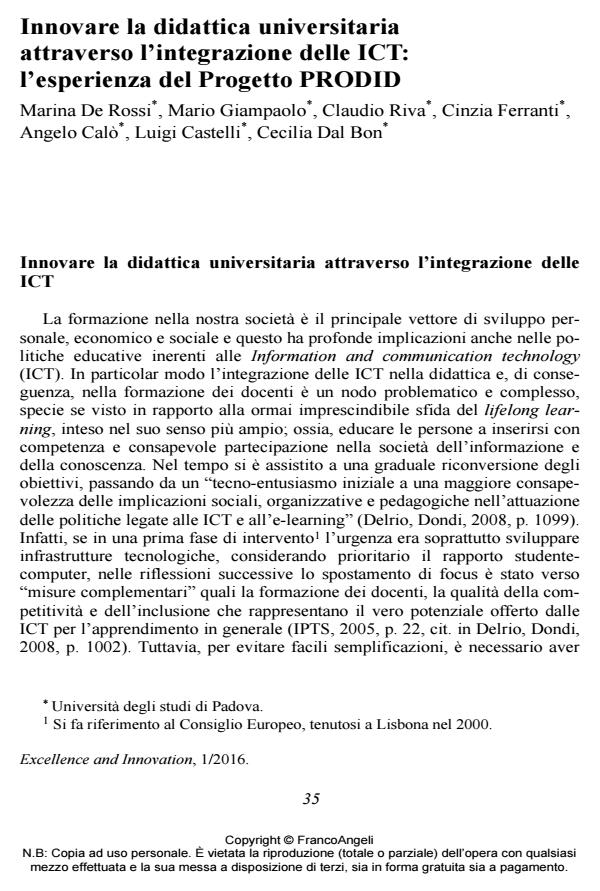Innovare la didattica universitaria attraverso l’integrazione delle ICT: l’esperienza del Progetto PRODID
Titolo Rivista EXCELLENCE AND INNOVATION IN LEARNING AND TEACHING
Autori/Curatori Marina De Rossi, Mario Giampaolo, Claudio Riva, Cinzia Ferranti, Angelo Calò, Luigi Castelli, Cecilia Dal Bon
Anno di pubblicazione 2016 Fascicolo 2016/1
Lingua Italiano Numero pagine 18 P. 35-52 Dimensione file 73 KB
DOI 10.3280/EXI2016-001003
Il DOI è il codice a barre della proprietà intellettuale: per saperne di più
clicca qui
Qui sotto puoi vedere in anteprima la prima pagina di questo articolo.
Se questo articolo ti interessa, lo puoi acquistare (e scaricare in formato pdf) seguendo le facili indicazioni per acquistare il download credit. Acquista Download Credits per scaricare questo Articolo in formato PDF

FrancoAngeli è membro della Publishers International Linking Association, Inc (PILA)associazione indipendente e non profit per facilitare (attraverso i servizi tecnologici implementati da CrossRef.org) l’accesso degli studiosi ai contenuti digitali nelle pubblicazioni professionali e scientifiche
This article deals with the theme of innovation in academic didactic through the use of technologies and is one of the outputs of a larger project, "Preparazione alla professionalità docente e innovazione didattica" (PRODID), which aims to establish and develop strategies to support teaching profession at the University of Padua. The authors introduce the theoretical framework and the projects carried out in the University of Padua to take advantage of the potential of technology, then present the results obteined during the first year of the project. Data were collected using a structured questionnaire which involved professors of the University and semi-structured interviews conducted with 16 privileged witnesses forming part of the teaching staff. The questionnaire collects the level of diffusion of didactic solutions that rely on online resources and the quality of teaching experiences conducted by the teachers. The interviews relate to multiple aspects of teaching by highlighting best and innovative practices, resistances due to established practices, and teaching models adopted.
Parole chiave:Teachers’ professional development; didactic technologies; blen¬ded learning; university; equal opportunity; innovation.
Marina De Rossi, Mario Giampaolo, Claudio Riva, Cinzia Ferranti, Angelo Calò, Luigi Castelli, Cecilia Dal Bon, Innovare la didattica universitaria attraverso l’integrazione delle ICT: l’esperienza del Progetto PRODID in "EXCELLENCE AND INNOVATION IN LEARNING AND TEACHING" 1/2016, pp 35-52, DOI: 10.3280/EXI2016-001003